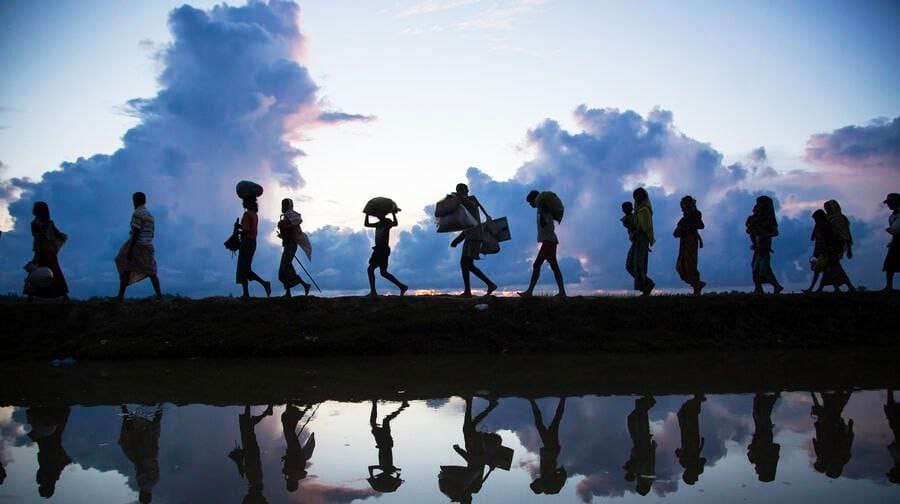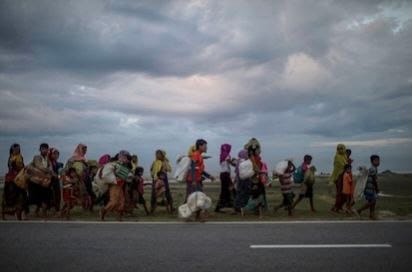Migration: Meaning, Causes, and Consequences
Migration: Meaning, Causes, and Consequences
1. Meaning of Migration
Migration refers to the movement of people from one place to another with the intention of settling temporarily or permanently in a new location. This movement can occur within a country (internal migration) or across international borders (international migration). Migration may involve individuals or large groups and can be voluntary or forced.
2. Causes of Migration
People migrate for a variety of reasons, often categorized into “push” factors (conditions that drive people away from their homes) and “pull” factors (conditions that attract people to new locations).

2.1. Push Factors (Forcing People to Leave Their Place of Origin)
- Economic Hardship:
- Unemployment, underemployment, or lack of economic opportunities can force people to move to places where better job prospects exist.
- Example: Rural-to-urban migration occurs when people leave rural areas in search of employment opportunities in cities.
- Political Instability and Conflict:
- Political persecution, civil wars, violent conflict, and oppression can compel people to flee their countries.
- Example: Refugees from Syria fleeing the civil war to Europe and neighboring countries.
- Environmental Degradation and Natural Disasters:
- Environmental factors, such as drought, deforestation, floods, and the impacts of climate change, can displace populations.
- Example: Residents of island nations in the Pacific facing displacement due to rising sea levels linked to climate change.
- Persecution and Discrimination:
- Ethnic, religious, or political persecution can force individuals or groups to leave their home country to seek safety.
- Example: The Rohingya crisis in Myanmar, where ethnic and religious persecution has driven the Rohingya population to seek refuge in Bangladesh and other countries.
- Poverty and Lack of Resources:
- Extreme poverty and lack of access to basic necessities, such as clean water, education, and healthcare, can push people to migrate in search of better living conditions.
- Example: Sub-Saharan Africans migrating to Europe due to poverty and limited resources in their home countries.
- Population Pressure:
- High population density and rapid population growth can lead to overuse of resources and overcrowding, pushing people to migrate to less populated areas.
- Example: Rural migration to urban areas due to overpopulation and scarcity of agricultural land.
2.2. Pull Factors (Attracting People to New Destinations)
- Better Employment Opportunities:
- Many people migrate to countries or cities where there are higher wages, job security, and better working conditions.
- Example: Migrant workers from Southeast Asia and Latin America moving to the Gulf States or the U.S. for higher-paying jobs.
- Higher Living Standards and Quality of Life:
- The promise of a better quality of life, access to healthcare, education, and improved living conditions can attract migrants.
- Example: Migration from developing countries to developed countries like Canada, Australia, or Europe for a higher standard of living.
- Political Stability and Freedom:
- Democratic governments, political stability, and respect for human rights are pull factors that attract migrants, especially those fleeing persecution.
- Example: Refugees seeking asylum in countries with stable governments, such as Germany or Sweden, due to political freedom.
- Educational Opportunities:
- Many people migrate for better education, seeking access to reputable schools, universities, and technical training programs.
- Example: International students migrating to the U.S., U.K., and other countries for higher education.
- Family Reunification:
- Family ties are a major pull factor, with many people migrating to reunite with family members who have already migrated.
- Example: Migrants from South Asia joining family members in the U.S. or the U.K. under family reunification programs.
- Climate and Environment:
- Some people migrate to regions with a more favorable climate or better environmental conditions.
- Example: Retirees moving from colder regions to warmer climates in countries like Spain or Florida, USA.
3. Consequences of Migration
The consequences of migration can be both positive and negative and can affect the individual, the origin country, the destination country, and global society as a whole.
3.1. Consequences for the Origin Country
- Positive Consequences:
- Remittances: Migrants often send money back to their home countries, which can be a major source of income and contribute to economic growth.
- Example: Remittances sent by migrant workers from countries like India and Mexico play a significant role in their economies.
- Skill Development: Migrants who return to their home countries may bring new skills, ideas, and knowledge that can contribute to economic and social development.
- Reduction in Unemployment: Migration can help reduce unemployment in regions with labor surpluses.
- Remittances: Migrants often send money back to their home countries, which can be a major source of income and contribute to economic growth.
- Negative Consequences:
- Brain Drain: The emigration of skilled workers, professionals, and educated individuals from developing countries can lead to a “brain drain,” depriving the home country of critical human resources.
- Example: The migration of healthcare professionals from African countries to Europe and North America.
- Population Decline: In some regions, especially rural areas, mass migration can lead to depopulation, aging populations, and a shrinking labor force.
- Family Separation: Migration can separate families for long periods, leading to social and emotional challenges, particularly for children and elderly family members left behind.
- Brain Drain: The emigration of skilled workers, professionals, and educated individuals from developing countries can lead to a “brain drain,” depriving the home country of critical human resources.
3.2. Consequences for the Destination Country
- Positive Consequences:
- Economic Growth: Migrants often fill labor shortages in key sectors such as agriculture, healthcare, construction, and technology, contributing to economic growth.
- Cultural Diversity: Migration introduces cultural diversity, which can enrich societies through new perspectives, traditions, and innovations.
- Demographic Balance: Migration can help address demographic challenges such as aging populations in developed countries by providing a younger workforce.
- Entrepreneurship and Innovation: Many migrants start businesses, creating jobs and stimulating local economies.
- Negative Consequences:
- Pressure on Public Services: In some cases, large-scale migration can strain public services such as healthcare, education, housing, and social welfare systems.
- Social Tensions and Xenophobia: The influx of migrants can lead to social tensions, especially if local populations perceive migrants as competitors for jobs, housing, or social services. This can also lead to the rise of xenophobia and anti-immigrant sentiments.
- Unemployment for Natives: In some cases, there may be competition for low-skilled jobs, potentially leading to resentment or unemployment among native workers.
- Integration Challenges: Migrants may face difficulties integrating into their new society, which can result in social isolation, discrimination, and difficulties in accessing education and job opportunities.
3.3. Global Consequences
- Spread of Ideas and Innovation:
- Migration contributes to the global exchange of ideas, knowledge, and technologies, fostering innovation and cultural exchange.
- Transnationalism:
- Migrants maintain ties to their home countries while living abroad, creating transnational communities that influence both their origin and destination countries through social, cultural, and economic exchanges.
- Global Refugee Crisis:
- Ongoing conflicts, persecution, and environmental degradation have led to a significant increase in refugees and displaced people. The global community faces the challenge of providing adequate protection, resources, and solutions for millions of displaced people.
- Example: The Syrian refugee crisis has had profound impacts on Europe and neighboring Middle Eastern countries.
Conclusion
Migration is a complex phenomenon with deep-rooted causes and far-reaching consequences. While it provides opportunities for economic growth, innovation, and cultural exchange, it also presents challenges in terms of integration, social tensions, and demographic imbalances. Addressing the causes of migration, whether economic, political, or environmental, requires global cooperation, while managing its consequences involves balanced policies in both origin and destination countries.



Post Comment